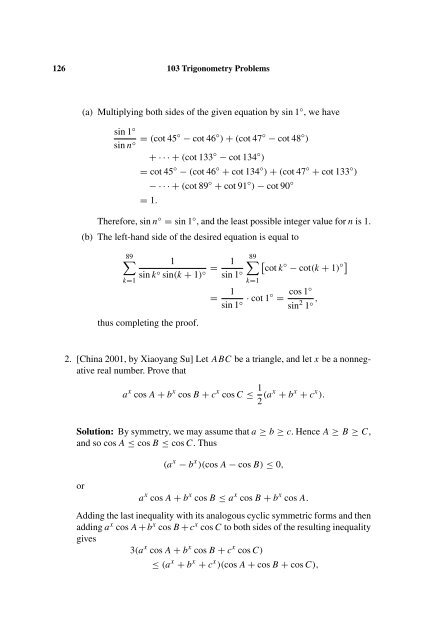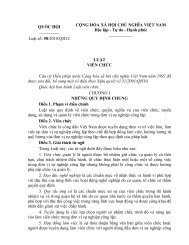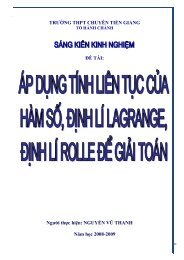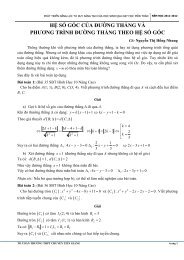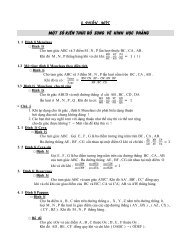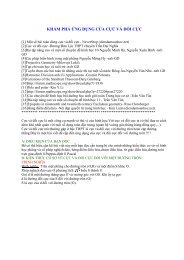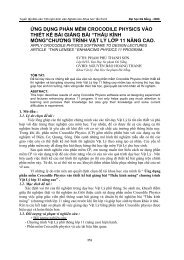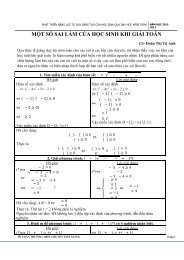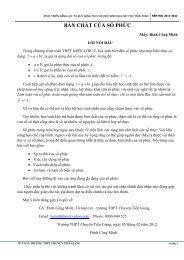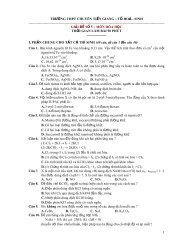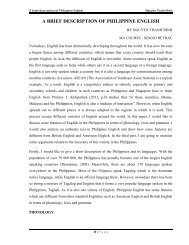103 Trigonometry Problems
103 Trigonometry Problems
103 Trigonometry Problems
Create successful ePaper yourself
Turn your PDF publications into a flip-book with our unique Google optimized e-Paper software.
126 <strong>103</strong> <strong>Trigonometry</strong> <strong>Problems</strong><br />
(a) Multiplying both sides of the given equation by sin 1 ◦ ,wehave<br />
sin 1 ◦<br />
sin n ◦ = (cot 45◦ − cot 46 ◦ ) + (cot 47 ◦ − cot 48 ◦ )<br />
+···+(cot 133 ◦ − cot 134 ◦ )<br />
= cot 45 ◦ − (cot 46 ◦ + cot 134 ◦ ) + (cot 47 ◦ + cot 133 ◦ )<br />
−···+(cot 89 ◦ + cot 91 ◦ ) − cot 90 ◦<br />
= 1.<br />
Therefore, sin n ◦ = sin 1 ◦ , and the least possible integer value for n is 1.<br />
(b) The left-hand side of the desired equation is equal to<br />
89<br />
∑<br />
k=1<br />
1<br />
sin k ◦ sin(k + 1) ◦ = 1 ∑89<br />
sin 1 ◦<br />
thus completing the proof.<br />
k=1<br />
[<br />
cot k ◦ − cot(k + 1) ◦]<br />
= 1<br />
sin 1 ◦ · cot cos 1◦ 1◦<br />
=<br />
sin 2 1 ◦ ,<br />
2. [China 2001, by Xiaoyang Su] Let ABC be a triangle, and let x be a nonnegative<br />
real number. Prove that<br />
a x cos A + b x cos B + c x cos C ≤ 1 2 (ax + b x + c x ).<br />
Solution: By symmetry, we may assume that a ≥ b ≥ c. Hence A ≥ B ≥ C,<br />
and so cos A ≤ cos B ≤ cos C. Thus<br />
or<br />
(a x − b x )(cos A − cos B) ≤ 0,<br />
a x cos A + b x cos B ≤ a x cos B + b x cos A.<br />
Adding the last inequality with its analogous cyclic symmetric forms and then<br />
adding a x cos A + b x cos B + c x cos C to both sides of the resulting inequality<br />
gives<br />
3(a x cos A + b x cos B + c x cos C)<br />
≤ (a x + b x + c x )(cos A + cos B + cos C),


